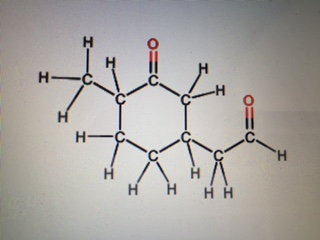

We hope this article on “Nomenclature and Structure of Aldehydes and Ketones” is helpful to you. Study Physical Properties of Carboxylic Acids Here

Which test is used to identify ketones?Īns: Tollens’ reagent test, also known as the silver-mirror test, is a qualitative laboratory test used to distinguish between an aldehyde and a ketone. Since aldehydes have one less alkyl group, polarity is lowered.

The polarity of ketones is due to the electron-donating inductive effect of two alkyl groups. Which is more polar aldehyde or ketone?Īns: Ketones are more polar than aldehydes. In contrast, a ketone has two carbon-based groups connected to the carbonyl carbon. The second group is either a hydrogen or a carbon-based group. To Learn more about Aldehyde Properties with examples, Uses And FAQs Visit BYJU’S for more content. The general formula of aldehyde can be written as R-CHO. An aldehyde has at least one hydrogen connected to the carbonyl carbon. Aldehyde- The aldehydes are a very important class of organic compounds they are characterized by the presence of the formal functional group -CHO. How can you tell the difference between aldehydes and ketones?Īns: Both aldehyde and ketones possess a carbonyl group, which is a carbon double bonded to oxygen. However, with functional groups that rank higher than ketone, the prefix ‘-oxo’ is added along with its locant number. If the substituents rank lower than ketone, then the ‘-one’ is added to the parent name with its locant number.
#Aldehyde functional group series#
The general molecular formula of the homologous aldehyde series is \(\) the carbon of the ketone is counted with the carbon of the hydrocarbon.Īns: Ketones are named by finding the carbonyl group with its location number. An aldehyde group always lies at the end of a carbon chain.


 0 kommentar(er)
0 kommentar(er)
